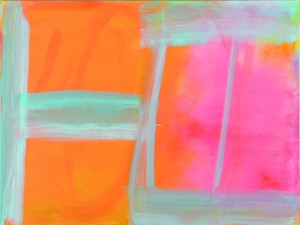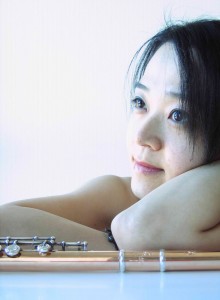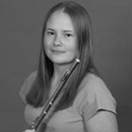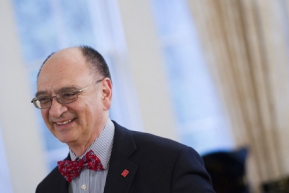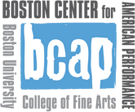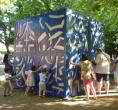
Digital sound and tactile sculpture by Jean-Robert Sedano and Solveig Ory (France). Wikimedia Commons. Public Domain.
The National Research Council of the National Academies has published Beyond Productivity: Information Technology, Innovation, and Creativity.*
The full report is available online.
A summary is provided below. I invite your comments.
Information Technology and Creative Practices (ITCP)
Technology and the arts have collaborated for a long time. “In the 19th century, for example, optical, chemical, and thin-film manufacturing technologies converged with the practices of the pictorial arts to establish the new domain of photography.” This led to a collaboration between the performing arts and moving photography called film. Though we take movies and photography for granted today, the cultural and economic consequences of these collaborations are difficult to overestimate.
Information technology (IT), “the technology involving the development, maintenance, and use of computer systems, software, and networks for the processing and distribution of data” (Merriam Webster), “has matured to a point where it can now be used to open up new (artistic) possibilities.”
Music and graphics have joined forces with IT for many years but other artistic areas lag behind.
Why?
One of the reasons is that the push to make computers easier to use has also resulted in more constricting software. “…Software tools encode numerous assumptions about the making of art and design – precisely the sorts of presuppositions that truly creative practitioners will want to challenge.
Proprietary software and closed operating systems also diminish creativity. Open source systems may need to be used instead.
Another reason is that computer scientists and artist/designers are often stuck in their respective roles of producer and consumer. The IT scientist produces software for the artist to buy and use. Collaboration between the two is rare because communication is sometimes difficult and each sees his/her role as essentially a distinct one.
On the whole, computer scientists are less likely to have a deep understanding of art and design than artists have about computers. The solution might be to train the same person deeply in both fields. This is expensive and time-consuming and may have mixed results.
Serious training in both fields for more people should be a long term goal but it may be more practical to set up teams of computer scientists working with artists. This model has worked well in the video games industry. Architects have also worked well with IT people in computer-aided-design and computer-aided-manufacture (CAD/CAM).
The best known example of a successful team of artists and IT people working together is in the film industry (Avatar, etc.).
Another way to foster collaboration is to improve communication between existing IT and artistic groups, individuals, and organizations by setting up “ITCP clusters.” Europe and emerging Asian countries are ahead of the U.S. in creating ITCP clusters. A local example is the Media Lab at MIT. The Media Lab is housed at a leading research institution utilizing the talent and resources offered there combined with the support and capabilities of industry leaders. It is difficult to replicate the Media Lab however, as it takes major start-up funding.
In Canada and Europe, standalone government-backed ITCP centers are being built. “Such centers are typically conceived of as instruments of arts and cultural policy, rather than as equivalents of national research laboratories.” But they could be used as both.
Boston appears to be a highly desirable venue for ITCP clusters to spring up. It has the talent, strong IT and artistic institutions, and potential corporate and governmental support.
Recommendations for Educators and Academic Administrators
1.) “Support the achievement of fluency in information technology (IT)…by art and design students through the provision of suitable facilities, opportunities, for hands-on experience with IT tools and media…”
2.) “Support educational experiences for computer science students that provide direct experience in the arts and design…”
3.) “Foster exploration of information technology and creative practices (ITCP) through incentives and experimentation with a range of informal (workshops and seminars)and formal vehicles (centers, awards, majors, minors)…”
4.) “Support curricula, especially at the undergraduate level, that provide the necessary disciplinary foundation for later specialization in ITCP.”
*Publisher: The National Academy Press, 2003, Washington, DC
